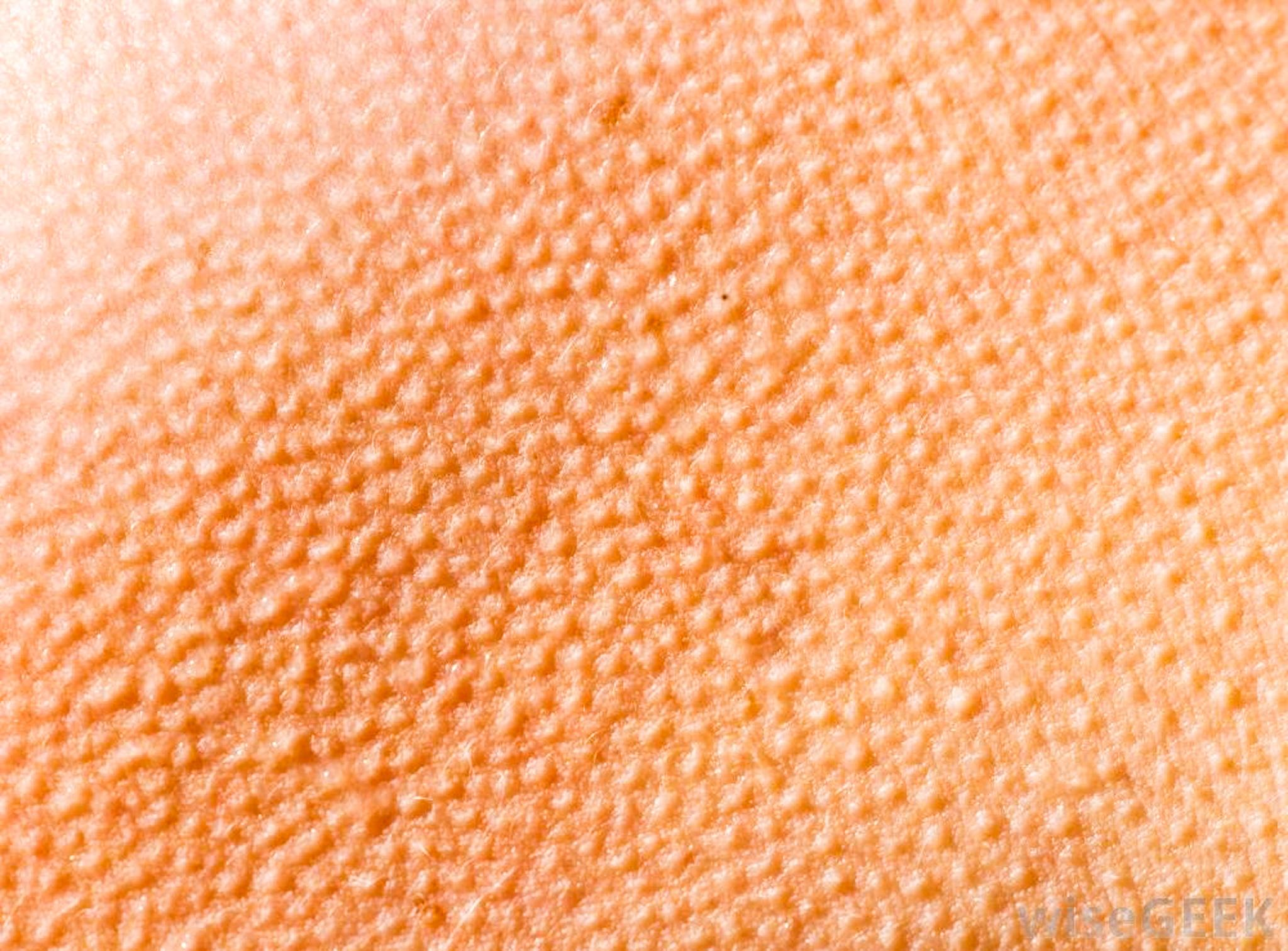
What is “goose-flesh”? How is it brought about?
Answer
522.9k+ views
Hint: The process of a temporary change in the skin as it gets protruded out in the form of tiny nodules due to tension in muscles.
Complete answer: Goose flesh is also known as goosebumps, and goose pimples. It is the formation of small bumps like a plucked goose on the skin of the body. This occurs due to the presence of muscular stress under unfavorable conditions. Generally, our body hairs are slanting, but due to some change in temperatures like extreme coldness or when the person is frightened, the hairs of our body stand erect. This leads to the skin becoming rougher.
This process may occur involuntarily because of the cations of the adrenaline hormones. They are also a type of vestigial response as they have lost their original function. It is observed that in ancient times, these hairs were the means of protection of animals and protect the animals from other predators.
They also trap more heat energy and have an insulating property. The reflex of producing the goose flesh is known as piloerection or the pilomotor reflex. It is usually found in humans, porcupines, or sea otters to protect themselves from other organisms.
When the tiny muscles present at the back of the hair called erector pili muscles contract and pull the hair to be erect then goose flesh is created. It is responsible for fight or flight reflexes and is started by the sympathetic nervous system. In animals, the goose flesh appears due to fear or anger, to intimidate other animals while in humans it occurs due to some irritating actions, fear, excitement, etc. It may also be caused due to drug withdrawal mainly opium.

Note: Sympathetic nervous system is one of the two major parts of the autonomic nervous system, while the other part is the parasympathetic nervous system. They are usually responsible for the body’s involuntary or unconscious actions and stimulate the fight or flight response. These responses occur at the time of the fight.
It was described first by Walter Bradford Cannon. The hormones which are responsible for this response may include estrogen, testosterone, and cortisol, as well as the neurotransmitters dopamine and serotonin which also affect how organisms react to stress.
Complete answer: Goose flesh is also known as goosebumps, and goose pimples. It is the formation of small bumps like a plucked goose on the skin of the body. This occurs due to the presence of muscular stress under unfavorable conditions. Generally, our body hairs are slanting, but due to some change in temperatures like extreme coldness or when the person is frightened, the hairs of our body stand erect. This leads to the skin becoming rougher.
This process may occur involuntarily because of the cations of the adrenaline hormones. They are also a type of vestigial response as they have lost their original function. It is observed that in ancient times, these hairs were the means of protection of animals and protect the animals from other predators.
They also trap more heat energy and have an insulating property. The reflex of producing the goose flesh is known as piloerection or the pilomotor reflex. It is usually found in humans, porcupines, or sea otters to protect themselves from other organisms.
When the tiny muscles present at the back of the hair called erector pili muscles contract and pull the hair to be erect then goose flesh is created. It is responsible for fight or flight reflexes and is started by the sympathetic nervous system. In animals, the goose flesh appears due to fear or anger, to intimidate other animals while in humans it occurs due to some irritating actions, fear, excitement, etc. It may also be caused due to drug withdrawal mainly opium.

Note: Sympathetic nervous system is one of the two major parts of the autonomic nervous system, while the other part is the parasympathetic nervous system. They are usually responsible for the body’s involuntary or unconscious actions and stimulate the fight or flight response. These responses occur at the time of the fight.
It was described first by Walter Bradford Cannon. The hormones which are responsible for this response may include estrogen, testosterone, and cortisol, as well as the neurotransmitters dopamine and serotonin which also affect how organisms react to stress.
Recently Updated Pages
Master Class 12 Biology: Engaging Questions & Answers for Success

Master Class 12 Physics: Engaging Questions & Answers for Success

Master Class 12 Business Studies: Engaging Questions & Answers for Success

Class 12 Question and Answer - Your Ultimate Solutions Guide

Master Class 11 Accountancy: Engaging Questions & Answers for Success

Master Class 11 Physics: Engaging Questions & Answers for Success

Trending doubts
The minimum age prescribed for election as a member class 10 social science CBSE

What is the full form of POSCO class 10 social science CBSE

Show that the points 11 52 and 9 5 are collinear-class-10-maths-CBSE

Difference between mass and weight class 10 physics CBSE

Identify the following with the help of map reading class 10 social science CBSE

What is the past participle of wear Is it worn or class 10 english CBSE




